Halloween theme by DDC
Download: Halloween_2.p3t
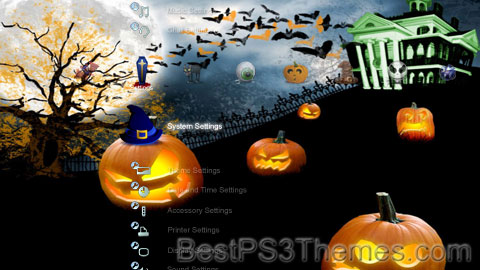
(6 backgrounds)
| Halloween | |
|---|---|
 Carving a jack-o'-lantern is a common Halloween tradition. | |
| Also called |
|
| Observed by | Western Christians and many non-Christians around the world[1] |
| Type | Christian, cultural |
| Significance | First day of Allhallowtide[2][3] |
| Celebrations | Trick-or-treating, costume parties, making jack-o'-lanterns, lighting bonfires, divination, apple bobbing, visiting haunted attractions |
| Observances | Church services,[4] prayer,[5] fasting,[1] vigil[6] |
| Date | 31 October |
| Related to | Samhain, Hop-tu-Naa, Calan Gaeaf, Allantide, Day of the Dead, Reformation Day, All Saints' Day, Mischief Night (cf. vigil) |
Halloween or Hallowe'en[7][8] (less commonly known as Allhalloween,[9] All Hallows' Eve,[10] or All Saints' Eve)[11] is a celebration observed in many countries on 31 October, the eve of the Western Christian feast of All Hallows' Day. It is at the beginning of the observance of Allhallowtide,[12] the time in the liturgical year dedicated to remembering the dead, including saints (hallows), martyrs, and all the faithful departed.[3][13][14][15] In popular culture, the day has become a celebration of horror, being associated with the macabre and supernatural.[16]
One theory holds that many Halloween traditions were influenced by Celtic harvest festivals, particularly the Gaelic festival Samhain, which are believed to have pagan roots.[17][18][19][20] Some go further and suggest that Samhain may have been Christianized as All Hallow's Day, along with its eve, by the early Church.[21] Other academics believe Halloween began solely as a Christian holiday, being the vigil of All Hallow's Day.[22][23][24][25] Celebrated in Ireland and Scotland for centuries, Irish and Scottish immigrants took many Halloween customs to North America in the 19th century,[26][27] and then through American influence various Halloween customs spread to other countries by the late 20th and early 21st century.[16][28]
Popular Halloween activities include trick-or-treating (or the related guising and souling), attending Halloween costume parties, carving pumpkins or turnips into jack-o'-lanterns, lighting bonfires, apple bobbing, divination games, playing pranks, visiting haunted attractions, telling scary stories, and watching horror or Halloween-themed films.[29] Some people practice the Christian observances of All Hallows' Eve, including attending church services and lighting candles on the graves of the dead,[30][31][32] although it is a secular celebration for others.[33][34][35] Some Christians historically abstained from meat on All Hallows' Eve, a tradition reflected in the eating of certain vegetarian foods on this vigil day, including apples, potato pancakes, and soul cakes.[36][37][38][39]
Etymology[edit]

The word Halloween or Hallowe'en ("Saints' evening"[40]) is of Christian origin;[41][42] a term equivalent to "All Hallows Eve" is attested in Old English.[43] The word hallowe[']en comes from the Scottish form of All Hallows' Eve (the evening before All Hallows' Day):[44] even is the Scots term for "eve" or "evening",[45] and is contracted to e'en or een;[46] (All) Hallow(s) E(v)en became Hallowe'en.
History[edit]
Christian origins and historic customs[edit]
Halloween is thought to have influences from Christian beliefs and practices.[47][23] The English word 'Halloween' comes from "All Hallows' Eve", being the evening before the Christian holy days of All Hallows' Day (All Saints' Day) on 1 November and All Souls' Day on 2 November.[48] Since the time of the early Church,[49] major feasts in Christianity (such as Christmas, Easter and Pentecost) had vigils that began the night before, as did the feast of All Hallows'.[50][47] These three days are collectively called Allhallowtide and are a time when Western Christians honour all saints and pray for recently departed souls who have yet to reach Heaven. Commemorations of all saints and martyrs were held by several churches on various dates, mostly in springtime.[51] In 4th-century Roman Edessa it was held on 13 May, and on 13 May 609, Pope Boniface IV re-dedicated the Pantheon in Rome to "St Mary and all martyrs".[52] This was the date of Lemuria, an ancient Roman festival of the dead.[53]
In the 8th century, Pope Gregory III (731–741) founded an oratory in St Peter's for the relics "of the holy apostles and of all saints, martyrs and confessors".[47][54] Some sources say it was dedicated on 1 November,[55] while others say it was on Palm Sunday in April 732.[56][57] By 800, there is evidence that churches in Ireland[58] and Northumbria were holding a feast commemorating all saints on 1 November.[59] Alcuin of Northumbria, a member of Charlemagne's court, may then have introduced this 1 November date in the Frankish Empire.[60] In 835, it became the official date in the Frankish Empire.[59] Some suggest this was due to Celtic influence, while others suggest it was a Germanic idea,[59] although it is claimed that both Germanic and Celtic-speaking peoples commemorated the dead at the beginning of winter.[61] They may have seen it as the most fitting time to do so, as it is a time of 'dying' in nature.[59][61] It is also suggested the change was made on the "practical grounds that Rome in summer could not accommodate the great number of pilgrims who flocked to it", and perhaps because of public health concerns over Roman Fever, which claimed a number of lives during Rome's sultry summers.[62][47]
By the end of the 12th century, the celebration had become known as the holy days of obligation in Western Christianity and involved such traditions as ringing church bells for souls in purgatory. It was also "customary for criers dressed in black to parade the streets, ringing a bell of mournful sound and calling on all good Christians to remember the poor souls".[64] The Allhallowtide custom of baking and sharing soul cakes for all christened souls,[65] has been suggested as the origin of trick-or-treating.[66] The custom dates back at least as far as the 15th century[67] and was found in parts of England, Wales, Flanders, Bavaria and Austria.[68] Groups of poor people, often children, would go door-to-door during Allhallowtide, collecting soul cakes, in exchange for praying for the dead, especially the souls of the givers' friends and relatives. This was called "souling".[67][69][70] Soul cakes were also offered for the souls themselves to eat,[68] or the 'soulers' would act as their representatives.[71] As with the Lenten tradition of hot cross buns, soul cakes were often marked with a cross, indicating they were baked as alms.[72] Shakespeare mentions souling in his comedy The Two Gentlemen of Verona (1593).[73] While souling, Christians would carry "lanterns made of hollowed-out turnips", which could have originally represented souls of the dead;[74][75] jack-o'-lanterns were used to ward off evil spirits.[76][77] On All Saints' and All Souls' Day during the 19th century, candles were lit in homes in Ireland,[78] Flanders, Bavaria, and in Tyrol, where they were called "soul lights",[79] that served "to guide the souls back to visit their earthly homes".[80] In many of these places, candles were also lit at graves on All Souls' Day.[79] In Brittany, libations of milk were poured on the graves of kinfolk,[68] or food would be left overnight on the dinner table for the returning souls;[79] a custom also found in Tyrol and parts of Italy.[81][79]
Christian minister Prince Sorie Conteh linked the wearing of costumes to the belief in vengeful ghosts: "It was traditionally believed that the souls of the departed wandered the earth until All Saints' Day, and All Hallows' Eve provided one last chance for the dead to gain vengeance on their enemies before moving to the next world. In order to avoid being recognized by any soul that might be seeking such vengeance, people would don masks or costumes".[82] In the Middle Ages, churches in Europe that were too poor to display relics of martyred saints at Allhallowtide let parishioners dress up as saints instead.[83][84] Some Christians observe this custom at Halloween today.[85] Lesley Bannatyne believes this could have been a Christianization of an earlier pagan custom.[86] Many Christians in mainland Europe, especially in France, believed "that once a year, on Hallowe'en, the dead of the churchyards rose for one wild, hideous carnival" known as the danse macabre, which was often depicted in church decoration.[87] Christopher Allmand and Rosamond McKitterick write in The New Cambridge Medieval History that the danse macabre urged Christians "not to forget the end of all earthly things".[88] The danse macabre was sometimes enacted in European village pageants and court masques, with people "dressing up as corpses from various strata of society", and this may be the origin of Halloween costume parties.[89][90][91][74]
In Britain, these customs came under attack during the Reformation, as Protestants berated purgatory as a "popish" doctrine incompatible with the Calvinist doctrine of predestination. State-sanctioned ceremonies associated with the intercession of saints and prayer for souls in purgatory were abolished during the Elizabethan reform, though All Hallow's Day remained in the English liturgical calendar to "commemorate saints as godly human beings".[92] For some Nonconformist Protestants, the theology of All Hallows' Eve was redefined; "souls cannot be journeying from Purgatory on their way to Heaven, as Catholics frequently believe and assert. Instead, the so-called ghosts are thought to be in actuality evil spirits".[93] Other Protestants believed in an intermediate state known as Hades (Bosom of Abraham).[94] In some localities, Catholics and Protestants continued souling, candlelit processions, or ringing church bells for the dead;[48][95] the Anglican church eventually suppressed this bell-ringing.[96] Mark Donnelly, a professor of medieval archaeology, and historian Daniel Diehl write that "barns and homes were blessed to protect people and livestock from the effect of witches, who were believed to accompany the malignant spirits as they traveled the earth".[97] After 1605, Hallowtide was eclipsed in England by Guy Fawkes Night (5 November), which appropriated some of its customs.[98] In England, the ending of official ceremonies related to the intercession of saints led to the development of new, unofficial Hallowtide customs. In 18th–19th century rural Lancashire, Catholic families gathered on hills on the night of All Hallows' Eve. One held a bunch of burning straw on a pitchfork while the rest knelt around him, praying for the souls of relatives and friends until the flames went out. This was known as teen'lay.[99] There was a similar custom in Hertfordshire, and the lighting of 'tindle' fires in Derbyshire.[100] Some suggested these 'tindles' were originally lit to "guide the poor souls back to earth".[101] In Scotland and Ireland, old Allhallowtide customs that were at odds with Reformed teaching were not suppressed as they "were important to the life cycle and rites of passage of local communities" and curbing them would have been difficult.[26]
In parts of Italy until the 15th century, families left a meal out for the ghosts of relatives, before leaving for church services.[81] In 19th-century Italy, churches staged "theatrical re-enactments of scenes from the lives of the saints" on All Hallow's Day, with "participants represented by realistic wax figures".[81] In 1823, the graveyard of Holy Spirit Hospital in Rome presented a scene in which bodies of those who recently died were arrayed around a wax statue of an angel who pointed upward towards heaven.[81] In the same country, "parish priests went house-to-house, asking for small gifts of food which they shared among themselves throughout that night".[81] In Spain, they continue to bake special pastries called "bones of the holy" (Spanish: Huesos de Santo) and set them on graves.[102] At cemeteries in Spain and France, as well as in Latin America, priests lead Christian processions and services during Allhallowtide, after which people keep an all night vigil.[103] In 19th-century San Sebastián, there was a procession to the city cemetery at Allhallowtide, an event that drew beggars who "appeal[ed] to the tender recollections of one's deceased relations and friends" for sympathy.[104]
Gaelic folk influence[edit]

Today's Halloween customs are thought to have been influenced by folk customs and beliefs from the Celtic-speaking countries, some of which are believed to have pagan roots.[105] Jack Santino, a folklorist, writes that "there was throughout Ireland an uneasy truce existing between customs and beliefs associated with Christianity and those associated with religions that were Irish before Christianity arrived".[106] The origins of Halloween customs are typically linked to the Gaelic festival Samhain.[107]
Samhain is one of the quarter days in the medieval Gaelic calendar and has been celebrated on 31 October – 1 November[108] in Ireland, Scotland and the Isle of Man.[109][110] A kindred festival has been held by the Brittonic Celts, called Calan Gaeaf in Wales, Kalan Gwav in Cornwall and Kalan Goañv in Brittany; a name meaning "first day of winter". For the Celts, the day ended and began at sunset; thus the festival begins the evening before 1 November by modern reckoning.[111] Samhain is mentioned in some of the earliest Irish literature. The names have been used by historians to refer to Celtic Halloween customs up until the 19th century,[112] and are still the Gaelic and Welsh names for Halloween.

Samhain marked the end of the harvest season and beginning of winter or the 'darker half' of the year.[114][115] It was seen as a liminal time, when the boundary between this world and the Otherworld thinned. This meant the Aos Sí, the 'spirits' or 'fairies', could more easily come into this world and were particularly active.[116][117] Most scholars see them as "degraded versions of ancient gods [...] whose power remained active in the people's minds even after they had been officially replaced by later religious beliefs".[118] They were both respected and feared, with individuals often invoking the protection of God when approaching their dwellings.[119][120] At Samhain, the Aos Sí were appeased to ensure the people and livestock survived the winter. Offerings of food and drink, or portions of the crops, were left outside for them.[121][122][123] The souls of the dead were also said to revisit their homes seeking hospitality.[124] Places were set at the dinner table and by the fire to welcome them.[125] The belief that the souls of the dead return home on one night of the year and must be appeased seems to have ancient origins and is found in many cultures.[68] In 19th century Ireland, "candles would be lit and prayers formally offered for the souls of the dead. After this the eating, drinking, and games would begin".[126]
Throughout Ireland and Britain, especially in the Celtic-speaking regions, the household festivities included divination rituals and games intended to foretell one's future, especially regarding death and marriage.[127] Apples and nuts were often used, and customs included apple bobbing, nut roasting, scrying or mirror-gazing, pouring molten lead or egg whites into water, dream interpretation, and others.[128] Special bonfires were lit and there were rituals involving them. Their flames, smoke, and ashes were deemed to have protective and cleansing powers.[114] In some places, torches lit from the bonfire were carried sunwise around homes and fields to protect them.[112] It is suggested the fires were a kind of imitative or sympathetic magic – they mimicked the Sun and held back the decay and darkness of winter.[125][129][130] They were also used for divination and to ward off evil spirits.[76] In Scotland, these bonfires and divination games were banned by the church elders in some parishes.[131] In Wales, bonfires were also lit to "prevent the souls of the dead from falling to earth".[132] Later, these bonfires "kept away the
Phantom of the Opera theme by DDC Download: PhantomoftheOpera.p3t Redirect to: God Armor theme by gravity0211 Download: GodArmor.p3t P3T Unpacker v0.12 This program unpacks Playstation 3 Theme files (.p3t) so that you can touch-up an existing theme to your likings or use a certain wallpaper from it (as many themes have multiple). But remember, if you use content from another theme and release it, be sure to give credit! Download for Windows: p3textractor.zip Instructions: Download p3textractor.zip from above. Extract the files to a folder with a program such as WinZip or WinRAR. Now there are multiple ways to extract the theme. The first way is to simply open the p3t file with p3textractor.exe. If you don’t know how to do this, right click the p3t file and select Open With. Alternatively, open the p3t file and it will ask you to select a program to open with. Click Browse and find p3textractor.exe from where you previously extracted it to. It will open CMD and extract the theme to extracted.[filename]. After that, all you need to do for any future p3t files is open them and it will extract. The second way is very simple. Just drag the p3t file to p3textractor.exe. It will open CMD and extract the theme to extracted.[filename]. For the third way, first put the p3t file you want to extract into the same folder as p3textractor.exe. Open CMD and browse to the folder with p3extractor.exe. Enter the following: Super Red Glossy version 1.50 theme by wirelessplayer Download: SuperRedGlossy.p3t P3T Unpacker v0.12 This program unpacks Playstation 3 Theme files (.p3t) so that you can touch-up an existing theme to your likings or use a certain wallpaper from it (as many themes have multiple). But remember, if you use content from another theme and release it, be sure to give credit! Download for Windows: p3textractor.zip Instructions: Download p3textractor.zip from above. Extract the files to a folder with a program such as WinZip or WinRAR. Now there are multiple ways to extract the theme. The first way is to simply open the p3t file with p3textractor.exe. If you don’t know how to do this, right click the p3t file and select Open With. Alternatively, open the p3t file and it will ask you to select a program to open with. Click Browse and find p3textractor.exe from where you previously extracted it to. It will open CMD and extract the theme to extracted.[filename]. After that, all you need to do for any future p3t files is open them and it will extract. The second way is very simple. Just drag the p3t file to p3textractor.exe. It will open CMD and extract the theme to extracted.[filename]. For the third way, first put the p3t file you want to extract into the same folder as p3textractor.exe. Open CMD and browse to the folder with p3extractor.exe. Enter the following: Fire Multiple theme by Luvsanimals07 Download: FireMultiple.p3t P3T Unpacker v0.12 This program unpacks Playstation 3 Theme files (.p3t) so that you can touch-up an existing theme to your likings or use a certain wallpaper from it (as many themes have multiple). But remember, if you use content from another theme and release it, be sure to give credit! Download for Windows: p3textractor.zip Instructions: Download p3textractor.zip from above. Extract the files to a folder with a program such as WinZip or WinRAR. Now there are multiple ways to extract the theme. The first way is to simply open the p3t file with p3textractor.exe. If you don’t know how to do this, right click the p3t file and select Open With. Alternatively, open the p3t file and it will ask you to select a program to open with. Click Browse and find p3textractor.exe from where you previously extracted it to. It will open CMD and extract the theme to extracted.[filename]. After that, all you need to do for any future p3t files is open them and it will extract. The second way is very simple. Just drag the p3t file to p3textractor.exe. It will open CMD and extract the theme to extracted.[filename]. For the third way, first put the p3t file you want to extract into the same folder as p3textractor.exe. Open CMD and browse to the folder with p3extractor.exe. Enter the following: Cheryl (Tweedy) Cole theme by Andrew Carrillo Download: CherylCole.p3t P3T Unpacker v0.12 This program unpacks Playstation 3 Theme files (.p3t) so that you can touch-up an existing theme to your likings or use a certain wallpaper from it (as many themes have multiple). But remember, if you use content from another theme and release it, be sure to give credit! Download for Windows: p3textractor.zip Instructions: Download p3textractor.zip from above. Extract the files to a folder with a program such as WinZip or WinRAR. Now there are multiple ways to extract the theme. The first way is to simply open the p3t file with p3textractor.exe. If you don’t know how to do this, right click the p3t file and select Open With. Alternatively, open the p3t file and it will ask you to select a program to open with. Click Browse and find p3textractor.exe from where you previously extracted it to. It will open CMD and extract the theme to extracted.[filename]. After that, all you need to do for any future p3t files is open them and it will extract. The second way is very simple. Just drag the p3t file to p3textractor.exe. It will open CMD and extract the theme to extracted.[filename]. For the third way, first put the p3t file you want to extract into the same folder as p3textractor.exe. Open CMD and browse to the folder with p3extractor.exe. Enter the following: Armin van Buuren theme by Racso Download: ArminvanBuuren.p3t
Armin Jozef Jacobus Daniël van Buuren OON (/væn ˈbjʊərən/ van BURE-ən, Dutch: [ˈɑrmɪ ˈɲoːzəf jaːˈkoːbʏz ˈdaːnijɛl vɑm ˈbyːrə(n)]; born 25 December 1976)[1] is a Dutch DJ and record producer. Since 2001, he has hosted A State of Trance (ASOT), a weekly radio show, which is broadcast to nearly 40 million listeners in 84 countries on over 100 FM radio stations.[2] According to the website DJs and Festivals, "the radio show propelled him to stardom and helped cultivate an interest in trance music around the world".[3]
Van Buuren has won a number of accolades. He has been ranked the number one DJ by DJ Mag a record of five times, four years in a row.[4] He was ranked fifth on the DJ Mag Top 100 DJs list in 2022,[5] as well as fourth in 2015, 2016, 2019 and 2020,[6] and third in 2017.[7] In 2014, he was nominated for a Grammy Award for Best Dance Recording for his single "This Is What It Feels Like" featuring Trevor Guthrie,[8] which makes him the fourth trance artist ever to receive a Grammy Award nomination.[9] In the United States, he holds the record for most entries, twenty-one, on the Billboard Dance/Electronic Albums chart.[10]
Armin van Buuren was born in Leiden, on 25 December 1976,[1] and grew up in Koudekerk aan den Rijn.[11] He was inspired by French electronic music composer Jean-Michel Jarre[12][13] and Dutch DJ and Remixer Ben Liebrand.[14] Van Buuren graduated from the Stedelijk Gymnasium Leiden in 1995, and studied law at Leiden University.[15] He began working as a DJ in Club Nexus in 1996,[16] playing multiple sets a week, most of which lasted six or more hours.[17] In 1999, he met Dave Lewis who introduced him as a DJ in England and the United States.[18] As his musical career began to take off, he put his law degree on hold, but he did return to graduate from law school in 2003.[19]
On 18 September 2009, van Buuren married Erika van Thiel.[20] Their daughter Fenna was born in July 2011.[21] van Buuren announced just hours before he was due to headline the main stage at Tomorrowland (27 July 2013) that his wife had given birth to a son, Remy.[22]
On 16 February 2018, van Buuren explored his family history in an episode of the TV series Verborgen verleden, the Dutch version of the UK series Who Do You Think You Are?.[23]
In 1996, van Buuren released EP and Push on Timeless Records. van Buuren had his first success with a track called "Blue Fear", which was released under the Cyber Records label in 1997. Another successful track, "Communication", was released under the same label and became popular in Ibiza, Spain in the summer of 1999.[24] After being signed to AM PM Records,[18] this track entered the UK Singles Chart at No. 18 in 2000.[25]
In the beginning of 1999, van Buuren started his label Armind together with United Recordings. The first release, Gig – "One", was well received. The second release, "Touch Me" under the name Rising Star, was signed to Ministry of Sound in the UK, before the record was released. By the time of his third release, Gimmick – "Free" was signed to R&S Records. During this year, he remixed the first two singles of Gouryella (Gouryella and Walhalla) and, under the guise of Rising Star, produced a remix of L'Esperanza, a song by Airscape.[26][27]
In 2000, Van Buuren started his own Armin van Buuren compilation series, a mix of progressive house and vocal trance styles of music. His first compilation album, A State of Trance (not to be confused with his weekly A State of Trance radio shows), sold 10,000 copies[28] and contains Van Buuren's remix of Moogwai, "Viola". Teaming up with Tiësto, two new projects were born: Major League – "Wonder Where You Are?" was released on Black Hole Recordings and Alibi – "Eternity" was released on Armind. "Eternity" received club and chart success and was signed to Paul van Dyk's imprint Vandit Records. Another major collaboration followed this. Together with Ferry Corsten, Van Buuren recorded a riff titled "Exhale[29]" for the System F album, Out of the Blue. Released as a single, this track reached Gold status.[30] Under the pseudonym Gaia he released "4 Elements" on Captivating Sounds, a sub-label of Warner Brothers.[31]
His second album, Basic Instinct featured a new track: Perpetuous Dreamer – "The Sound of Goodbye". This track entered the Dutch charts in June 2001 at number 26. Later in the year, the track hit No. 1 on the Hot Dance Music/Club Play chart.[32] The third album, In Motion was released 6 August 2001. A fourth album, Transparence, followed in 2002. In 2003, he worked with such artists such as DJ Seth Alan Fannin throughout a global tour on Dance Revolution in Europe, selling out to crowds of 20,000 people in the Netherlands.[33]
In March 2001, Van Buuren started his own radio show on ID&T Radio[34] (traditionally broadcast in Dutch and later English since ASOT 183). In this weekly two-hour show, entitled A State of Trance, he plays the latest popular trance music tracks, and publishes the artists and track titles on his website. When ID&T Radio changed genres in 2004, Van Buuren moved A State of Trance to Fresh FM and later SLAM!FM, two Dutch radio stations. It is now a weekly feature on Radio 538, the Dutch radio station,[35] DI.FM, an online radio station,[36] and on XM Satellite Radio, channel 52 in the United States and Canada.[37] A complete list of stations that broadcast A State of Trance can be found at the ASOT section of Armin's website.[38]
In 2002, he had a residency at Glow in Washington D.C.,[39] and played across North America. He regularly appeared at Amnesia on the island of Ibiza, Balearic Islands, Spain. In October that year, Van Buuren was voted number 5 in the DJ Mag.
In June 2003, Van Buuren celebrated the 100th episode of A State of Trance at Bloomingdale, Bloemendaal aan Zee, Netherlands and released his debut studio album, 76, a 76-minute album divided into 13 tracks.[40] In the same year he was voted No. 3 in the DJ Mag and held third place for the next two years (2004, 2005). Also in 2004, Van Buuren remixed the 24 theme song into a trance hit.
On 2 June 2005, he celebrated the 200th episode of A State of Trance at the Museumplein of Amsterdam. On 8 August 2005, Van Buuren released his second studio album, Shivers. On the album Van Buuren worked with artists such as Pakistani-American singer Nadia Ali, English singer Justine Suissa and American trance duo Gabriel & Dresden. On 25 May 2006, he celebrated with various artists the 250th episode of A State of Trance at Asta, The Hague, Netherlands. He was voted number two in the 2006 DJ Mag. On 17 May 2007, he celebrated with various artists the 300th episode of A State of Trance at Pettelaarse Schans, 's-Hertogenbosch, Netherlands.
Van Buuren was elected best DJ in the world in the 2007 DJ Mag edition. On 12 January 2008, Van Buuren was given the "Buma Cultuur Pop Award," the most prestigious Dutch music award.[41] On 17 April 2008, Van Buuren released his third studio album, Imagine. It features collaboration with singers such as Jacqueline Govaert of Krezip. The album debuted at number one on the Dutch Albums Chart. The second single released from the album, "In and Out of Love", featuring Sharon den Adel from the band Within Temptation, has spawned a music video that has been viewed over 304 million times on YouTube.[42] Since the release of Imagine, Van Buuren has been working with Benno de Goeij of Rank 1 on solo productions and remixes.[citation needed] On 1 May 2008, he celebrated with various artists the 350th episode of A State of Trance at Noxx, Antwerp, Belgium. He was voted No. 1 in the 2008 DJ Mag again.
He collaborated with his brother, guitarist Eller van Buuren, at Together As One in Los Angeles, U.S., on New Year's Eve 2009, as well as on Armin's 2008 studio album Imagine. His performance with his brother at Together As One was also the last event of his Armin Only: Imagine world tour. To celebrate the 400th episode of A State of Trance, he performed at three shows with various artists in April, 2009 at Club Butan, Wuppertal, Germany, AIR, Birmingham, United Kingdom and Maassilo, Rotterdam, Netherlands.
Also in 2009, Foreign Media Games announced the production of Armin van Buuren: In the Mix, a music video game being produced in collaboration with Cloud 9 Music and Van Buuren's Armada Music label. The title was released on 12 November 2010 exclusively for the Wii console.[43] He was voted number one DJ in the 2009 DJ Mag for the third consecutive year.
On 3 March 2010, Van Buuren was awarded with the Golden Harp for his musical work and contribution to Dutch music, by Buma/Stemra at the 2010 Buma Harpen Gala in Hilversum, Netherlands.[44][45] To celebrate the 450th episode of A State of Trance, he performed with various artists at five shows across two continents. The locations were: The Guvernment, Toronto, Canada on 1 April 2010, Roseland Ballroom, New York City on 2 April and on 3 April again, Expo Arena, Bratislava, Slovakia on 9 April and Centennial Hall, Wroclaw, Poland on 24 April.
On 23 June 2010, it was announced that Van Buuren's fourth studio album, Mirage was due to be released on 10 September.[46] The first single "Full Focus", was released through iTunes Store on 24 June.[47] The song peaked at number 60 in the Netherlands. One of the confirmed tracks from the album is a collaboration with English singer Sophie Ellis-Bextor called "Not Giving Up on Love", which was released as a single from Bextor's fourth studio album, Make a Scene.[48][49] Armin also wrote a song for English singer Seal, but due to the release of his greatest hits album, Hits, the collaboration never came together.[50] On 12 September 2010, Van Buuren launched "A State of Sundays", a new weekly 24-hour radio show aired on Sirius XM Radio.[51] On 20 October 2010, Van Buuren won the award for Most Popular International DJ presented by The Golden Gnomes.[52] A week later he was announced, for the fourth year running, as the number one DJ in DJ Mag.[53]
The 2010 edition of Armin Only: Mirage kicked off in November 2010, in Utrecht, Netherlands, and was followed by shows in Saint Petersburg, Kyiv, Buenos Aires, Melbourne, Beirut, Poznań, Moscow and Bratislava.[54]
In March and April, 2011, celebrating the 500th episode of his radio show, Van Buuren performed five live shows along with various artists; the first was in Johannesburg, South Africa at MTN Expo Centre, and the second in Miami's Ultra Music Festival. He then performed in Argentina at GEBA in Buenos Aires, followed by a large event at Brabanthallen in Den Bosch, Netherlands which included more than 30 DJs from countries all over the world and was attended by over 30,000 people. The final show was held in Sydney on 16 April at Acer Arena. In 2011, Van Buuren was appointed Officer of the Order of Oranje-Nassau for services to Dutch dance and music economy.[55] That year he also received the Key to (Freedom) of Leiden from the City Mayor, as well as being voted No. 2 in the 2011 DJ Mag.
To celebrate the 550th episode of A State of Trance, he performed with various artists on two different continents during fourth weeks. The show was called A State of Trance 550: Invasion. The first event was celebrated at Ministry of Sound in London on 1 March 2012. On 7 March, Moscow held the second event at Expocentre. Kyiv's show was performed at International Exhibition Centre on 10 March. On 17 March, as part of the Beyond Wonderland festival in Los Angeles and on 25 March at the Ultra Music Festival in Miami. On 31 March, the biggest and final edition of ASOT 550 took place in the Brabanthallen of Den Bosch, Netherlands. On 19 October 2012, Van Buuren was announced for a fifth non-consecutive year as the world's number one DJ according to DJ Mag.[56]
To celebrate the 600th episode of A State of Trance, Van Buuren announced that he would perform with various artists all around the world in early 2013. The show was called A State of Trance 600: The Expedition. It was announced that the show would tour the world, including stops in Madrid, Mexico City, São Paulo, Minsk, Sofia, Beirut, Kuala Lumpur, Mumbai, Miami, Guatemala City, New York City, and Den Bosch.[57][58]
The first single of Van Buuren's fifth studio album, Intense, titled "This Is What It Feels Like", featured Canadian singer and songwriter Trevor Guthrie, and was released on 5 April 2013. The single nominated for a Grammy Award for Best Dance Recording.[59] The tour for the album, Armin Only: Intense, was announced on 17 October 2013.[60]
30 April 2013 saw the abdication of Queen Beatrix of the Netherlands in favor of her son, King Willem-Alexander of the Netherlands, who was sworn in and inaugurated that day, which was Queen's Day as well. Van Buuren was the headline act in a performance to a live audience celebrating the King's crowning in Amsterdam. While he was performing live together with the Royal Concertgebouw Orchestra in the Amsterdam Harbor on Java-eiland, King Willem-Alexander, Queen Máxima and their three daughters made an unplanned visit on stage.[61][62]
On 19 October 2013, Armin van Buuren was ranked number two DJ in the world by DJ Mag. On 26 January 2014, Armin van Buuren attended the 56th Grammy Awards, in relation to his Grammy Award nomination for the single featuring Trevor Guthrie, "This Is What It Feels Like" in the category of Best Dance Recording.
On 8 May 2015, Armin van Buuren released the first single from his sixth studio album, Embrace, which was released on 29 October 2015.[63] The single is titled "Another You" featuring Mr Probz. Three weeks after releasing "Another You", Van Buuren also debuted another remix from Game of Thrones official theme which is originally made by composer Ramin Djawadi.[64]
On 16 October 2015 Armin van Buuren released the next single from Embrace called "Strong Ones" featuring Cimo Fränkel. This was followed by the release of his collaboration with Cosmic Gate "Embargo" on 22 October 2015. To accompany the album's release, Van Buuren announced the return of the Armin Only series of parties.
This edition of the tour was titled Armin Only: Embrace and took place throughout both 2015 and 2016. As the title of the tour suggests, it was based around the collection of music that he showcased on his new album.[65]
On 2 February 2017, Armin van Buuren officially opened a new A State of Trance radio show studio in Amsterdam as part of his celebrations for the 800th episode of the radio show. The studio is located in the Armada headquarters.[66] With the new accommodations made possible by the studio, he introduced a new segment of the radio show called Service for Dreamers where he invites fans to send in their favorite trance tracks that have a special meaning to them. Every week one track gets chosen to be featured live on the show and introduced by the fans of the radio show live, either by a walk-in, phone call, Skype or other means of contact.[67]
In 2017, Armin van Buuren announced he will be releasing an online MasterClass sharing his expertise in electronic music production.[68]
On 13 April 2017, Armin van Buuren performed at the Heineken stage in Shanghai, in the first Formula 1 Festival along with Angela Zhang.[69]
Armin performed a seven-hour-long set at the Romania Untold Festival on 6 August 2018, clocking from 2:00 a.m. to after 9:00 a.m.[70] This outlasted his previous 2017 ASOT performance, which had gone on for five hours.[71]
On 6 October 2019, he performed at Republic Square, Yerevan, Armenia as an opening act for the World Congress on Information Technology (WCIT).[72]
On 25 October 2019, Armin released his seventh studio album, Balance.[73]
In January 2021, Armin celebrated the 1000th episode of A State of Trance with a 7-day long livestream, where he, co-host Ruben de Ronde and monthly show resident Ferry Corsten presented a list of the top 1000 songs played during A State of Trance radio shows, as voted on by listeners of the show.[74] The livestream ran from January 14 to January 21, and the top song was Shivers, from Armin's 2005 album. As has been done for previous radio show milestones, a major ASOT1000 festival was planned in Utrecht, but due to the COVID-19 pandemic, it has since been repeatedly delayed. The festival was held on March 4-5, 2023, by which point the weekly radio show have already surpassed 1100 episodes.[75]
Jimi Hendrix theme by Joshua Luebke Download: JimiHendrix_2.p3t
James Marshall "Jimi" Hendrix (born Johnny Allen Hendrix; November 27, 1942 – September 18, 1970) was an American guitarist, songwriter and singer. Although his mainstream career spanned only four years, he is widely regarded as the greatest and one of the most influential electric guitarists in the history of popular music, and one of the most celebrated musicians of the 20th century. The Rock and Roll Hall of Fame describes him as "arguably the greatest instrumentalist in the history of rock music."[1]
Born in Seattle, Washington, Hendrix began playing guitar at age 15. In 1961, he enlisted in the US Army, but was discharged the following year. Soon afterward, he moved to Clarksville, then Nashville, Tennessee, and began playing gigs on the chitlin' circuit, earning a place in the Isley Brothers' backing band and later with Little Richard, with whom he continued to work through mid-1965. He then played with Curtis Knight and the Squires before moving to England in late 1966 after bassist Chas Chandler of the Animals became his manager. Within months, Hendrix had earned three UK top ten hits with his band, the Jimi Hendrix Experience (consisting of bassist Noel Redding, drummer Mitch Mitchell, and Hendrix himself): "Hey Joe", "Purple Haze", and "The Wind Cries Mary". He achieved fame in the US after his performance at the Monterey Pop Festival in 1967, and in 1968 his third and final studio album, Electric Ladyland, reached number one in the US. The double LP was Hendrix's most commercially successful release and his only number one album. The world's highest-paid rock musician,[2] he headlined the Woodstock Festival in 1969 and the Isle of Wight Festival in 1970 before his accidental death in London from barbiturate-related asphyxia in September 1970.
Hendrix was inspired by American rock and roll and electric blues. He favored overdriven amplifiers with high volume and gain, and was instrumental in popularizing the previously undesirable sounds caused by guitar amplifier feedback. He was also one of the first guitarists to make extensive use of tone-altering effects units in mainstream rock, such as fuzz distortion, Octavia, wah-wah, and Uni-Vibe. He was the first musician to use stereophonic phasing effects in recordings. Holly George-Warren of Rolling Stone commented: "Hendrix pioneered the use of the instrument as an electronic sound source. Players before him had experimented with feedback and distortion, but Hendrix turned those effects and others into a controlled, fluid vocabulary every bit as personal as the blues with which he began."[3]
Hendrix was the recipient of several music awards during his lifetime and posthumously. In 1967, readers of Melody Maker voted him the Pop Musician of the Year and in 1968, Billboard named him the Artist of the Year and Rolling Stone declared him the Performer of the Year. Disc and Music Echo honored him with the World Top Musician of 1969 and in 1970, Guitar Player named him the Rock Guitarist of the Year. The Jimi Hendrix Experience was inducted into the Rock and Roll Hall of Fame in 1992 and the UK Music Hall of Fame in 2005. Rolling Stone ranked the band's three studio albums, Are You Experienced (1967), Axis: Bold as Love (1967), and Electric Ladyland (1968), among the "500 Greatest Albums of All Time", and they ranked Hendrix as the greatest guitarist and the sixth-greatest artist of all time. Hendrix was named the greatest guitarist of all time by Rolling Stone in 2023.[4]
Hendrix was of African American and alleged Cherokee descent.[nb 1] His paternal grandfather, Bertran Philander Ross Hendrix, was born in 1866 from an extramarital affair between a woman named Fanny and a grain merchant from Urbana, Ohio, or Illinois, one of the wealthiest men in the area at that time.[11][nb 2] Hendrix's paternal grandmother, Zenora "Nora" Rose Moore, was a former dancer and vaudeville performer who co-founded Fountain Chapel in Hogan's Alley.[13] Hendrix and Moore relocated to Vancouver, Canada, where they had a son they named James Allen Hendrix on June 10, 1919; the family called him "Al".[14]
In 1941, after moving to Seattle, Washington, Al met Lucille Jeter (1925–1958) at a dance; they married on March 31, 1942.[15] Lucille's father (Jimi's maternal grandfather) was Preston Jeter (born 1875), whose mother was born in similar circumstances as Bertran Philander Ross Hendrix.[16] Lucille's mother, Clarice (née Lawson), had African American ancestors who had been enslaved people.[17] Al, who had been drafted by the US Army to serve in World War II, left to begin his basic training three days after the wedding.[18] Johnny Allen Hendrix was born on November 27, 1942, in Seattle; he was the first of Lucille's five children. In 1946, Johnny's parents changed his name to James Marshall Hendrix, in honor of Al and his late brother Leon Marshall.[19][nb 3]
Stationed in Alabama at the time of Hendrix's birth, Al was denied the standard military furlough afforded servicemen for childbirth; his commanding officer placed him in the stockade to prevent him from going AWOL to see his infant son in Seattle. He spent two months locked up without trial, and, while in the stockade, received a telegram announcing his son's birth.[13][nb 4] During Al's three-year absence, Lucille struggled to raise their son.[23] When Al was away, Hendrix was mostly cared for by family members and friends, especially Lucille's sister Delores Hall and her friend Dorothy Harding.[24] Al received an honorable discharge from the US Army on September 1, 1945. Two months later, unable to find Lucille, Al went to the Berkeley, California, home of a family friend named Mrs. Champ, who had taken care of and attempted to adopt Hendrix; this is where Al saw his son for the first time.[25]
After returning from service, Al reunited with Lucille, but his inability to find steady work left the family impoverished. They both struggled with alcohol, and often fought when intoxicated. The violence sometimes drove Hendrix to withdraw and hide in a closet in their home.[26] His relationship with his brother Leon (born 1948) was close but precarious; with Leon in and out of foster care, they lived with an almost constant threat of fraternal separation.[27] In addition to Leon, Hendrix had three younger siblings: Joseph, born in 1949, Kathy in 1950, and Pamela in 1951, all of whom Al and Lucille gave up to foster care and adoption.[28] The family frequently moved, staying in cheap hotels and apartments around Seattle. On occasion, family members would take Hendrix to Vancouver to stay at his grandmother's. A shy and sensitive boy, he was deeply affected by his life experiences.[29] In later years, he confided to a girlfriend that he had been the victim of sexual abuse by a man in uniform.[30] On December 17, 1951, when Hendrix was nine years old, his parents divorced; the court granted Al custody of him and Leon.[31]
At Horace Mann Elementary School in Seattle during the mid-1950s, Hendrix's habit of carrying a broom with him to emulate a guitar gained the attention of the school's social worker. After more than a year of his clinging to a broom like a security blanket, she wrote a letter requesting school funding intended for underprivileged children, insisting that leaving him without a guitar might result in psychological damage.[32] Her efforts failed, and Al refused to buy him a guitar.[32][nb 5]
In 1957, while helping his father with a side-job, Hendrix found a ukulele among the garbage they were removing from an older woman's home. She told him that he could keep the instrument, which had only one string.[34] Learning by ear, he played single notes, following along to Elvis Presley songs, particularly "Hound Dog".[35][nb 6] By the age of 33, Hendrix's mother Lucille had developed cirrhosis of the liver, and on February 2, 1958, she died when her spleen ruptured.[37] Al refused to take James and Leon to attend their mother's funeral; he instead gave them shots of whiskey and told them that was how men should deal with loss.[37][nb 7] In 1958, Hendrix completed his studies at Washington Junior High School and began attending, but did not graduate from, Garfield High School.[38][nb 8]
In mid-1958, at age 15, Hendrix acquired his first acoustic guitar, for $5[41] (equivalent to $53 in 2023). He played for hours daily, watching others and learning from more experienced guitarists, and listening to blues artists such as Muddy Waters, B.B. King, Howlin' Wolf, and Robert Johnson.[42] The first tune Hendrix learned to play was the television theme "Peter Gunn".[43] Around that time, Hendrix jammed with boyhood friend Sammy Drain and his keyboard-playing brother.[44] In 1959, attending a concert by Hank Ballard & The Midnighters in Seattle, Hendrix met the group's guitarist Billy Davis.[45] Davis showed him some guitar licks and got him a short gig with the Midnighters.[46] The two remained friends until Hendrix's death in 1970.[47]
Soon after he acquired the acoustic guitar, Hendrix formed his first band, the Velvetones. Without an electric guitar, he could barely be heard over the sound of the group. After about three months, he realized that he needed an electric guitar.[48] In mid-1959, his father relented and bought him a white Supro Ozark.[48] Hendrix's first gig was with an unnamed band in the Jaffe Room of Seattle's Temple De Hirsch, but they fired him between sets for showing off.[49] He joined the Rocking Kings, which played professionally at venues such as the Birdland club. When his guitar was stolen after he left it backstage overnight, Al bought him a red Silvertone Danelectro.[50]
Before Hendrix was 19 years old, law authorities had twice caught him riding in stolen cars. Given a choice between prison or joining the Army, he chose the latter and enlisted on May 31, 1961.[51] After completing eight weeks of basic training at Fort Ord, California, he was assigned to the 101st Airborne Division and stationed at Fort Campbell, Kentucky.[52] He arrived on November 8, and soon afterward he wrote to his father: "There's nothing but physical training and harassment here for two weeks, then when you go to jump school ... you get hell. They work you to death, fussing and fighting."[53] In his next letter home, Hendrix, who had left his guitar in Seattle at the home of his girlfriend Betty Jean Morgan, asked his father to send it to him as soon as possible, stating: "I really need it now."[53] His father obliged and sent the red Silvertone Danelectro on which Hendrix had hand-painted the words "Betty Jean" to Fort Campbell.[54] His apparent obsession with the instrument contributed to his neglect of his duties, which led to taunting and physical abuse from his peers, who at least once hid the guitar from him until he had begged for its return.[55] In November 1961, fellow serviceman Billy Cox walked past an army club and heard Hendrix playing.[56] Impressed by Hendrix's technique, which Cox described as a combination of "John Lee Hooker and Beethoven", Cox borrowed a bass guitar and the two jammed.[57] Within weeks, they began performing at base clubs on the weekends with other musicians in a loosely organized band, the Casuals.[58]
Hendrix completed his paratrooper training and, on January 11, 1962, Major General Charles W. G. Rich awarded him the prestigious Screaming Eagles patch.[53] By February, his personal conduct had begun to draw criticism from his superiors. They labeled him an unqualified marksman and often caught him napping while on duty and failing to report for bed checks.[59] On May 24, Hendrix's platoon sergeant, James C. Spears, filed a report in which he stated: "He has no interest whatsoever in the Army ... It is my opinion that Private Hendrix will never come up to the standards required of a soldier. I feel that the military service will benefit if he is discharged as soon as possible."[60] On June 29, 1962, Hendrix was granted a general discharge under honorable conditions.[61] Hendrix later spoke of his dislike of the army and that he had received a medical discharge after breaking his ankle during his 26th parachute jump,[62][nb 9] but no Army records have been produced that indicate that he received or was discharged for any injuries.[64]
In September 1962, after Cox was discharged from the Army, he and Hendrix moved about 20 miles (32 km) across the state line from Fort Campbell to Clarksville, Tennessee, and formed a band, the King Kasuals.[65] In Seattle, Hendrix saw Butch Snipes play with his teeth and now the Kasuals' second guitarist, Alphonso "Baby Boo" Young, was performing this guitar gimmick.[66] Not to be upstaged, Hendrix also learned to play in this way. He later explained: "The idea of doing that came to me ... in Tennessee. Down there you have to play with your teeth or else you get shot. There's a trail of broken teeth all over the stage."[67]
Although they began playing low-paying gigs at obscure venues, the band eventually moved to Nashville's Jefferson Street, which was the traditional heart of the city's black community and home to a thriving rhythm and blues music scene.[68] They earned a brief residency playing at a popular venue in town, the Club del Morocco, and for the next two years Hendrix made a living performing at a circuit of venues throughout the South that were affiliated with the Theater Owners Booking Association (TOBA), widely known as the chitlin' circuit.[69] In addition to playing in his own band, Hendrix performed as a backing musician for various soul, R&B, and blues musicians, including Wilson Pickett, Slim Harpo, Sam Cooke, Ike & Tina Turner[70] and Jackie Wilson.[71]
In January 1964, feeling he had outgrown the circuit artistically, and frustrated by having to follow the rules of bandleaders, Hendrix decided to venture out on his own. He moved into the Hotel Theresa in Harlem, where he befriended Lithofayne Pridgon, known as "Faye", who became his girlfriend.[72] A Harlem native with connections throughout the area's music scene, Pridgon provided him with shelter, support, and encouragement.[73] Hendrix also met the Allen twins, Arthur and Albert.[74][nb 10] In February 1964, Hendrix won first prize in the Apollo Theater amateur contest.[76] Hoping to secure a career opportunity, he played the Harlem club circuit and sat in with various bands. At the recommendation of a former associate of Joe Tex, Ronnie Isley granted Hendrix an audition that led to an offer to become the guitarist with the Isley Brothers' backing band, the I.B. Specials, which he readily accepted.[77]
In March 1964, Hendrix recorded the two-part single "Testify" with the Isley Brothers. Released in June, it failed to chart.[78] In May, he provided guitar instrumentation for the Don Covay song, "Mercy Mercy". Issued in August by Rosemart Records and distributed by Atlantic, the track reached number 35 on the Billboard chart.[79]
Hendrix toured with the Isleys during much of 1964, but near the end of October, after growing tired of playing the same set every night, he left the band.[80][nb 11] Soon afterward, Hendrix joined Little Richard's touring band, the Upsetters.[82] During a stop in Los Angeles in February 1965, he recorded his first and only single with Richard, "I Don't Know What You Got (But It's Got Me)", written by Don Covay and released by Vee-Jay Records.[83] Richard's popularity was waning at the time, and the single peaked at number 92, where it remained for one week before dropping off the chart.[84][nb 12] Hendrix met singer Rosa Lee Brooks while staying at the Wilcox Hotel in Hollywood, and she invited him to participate in a recording session for her single, which included the Arthur Lee penned "My Diary" as the A-side, and "Utee" as the B-side.[86] Hendrix played guitar on both tracks, which also included background vocals by Lee. The single failed to chart, but Hendrix and Lee began a friendship that lasted several years; Hendrix later became an ardent supporter of Lee's band, Love.[86]
In July 1965, Hendrix made his first television appearance on Nashville's Channel 5 Night Train. Performing in Little Richard's ensemble band, he backed up vocalists Buddy and Stacy on "Shotgun". The video recording of the show marks the earliest known footage of Hendrix performing.[82] Richard and Hendrix often clashed over tardiness, wardrobe, and Hendrix's stage antics, and in late July, Richard's brother Robert fired him.[87]
On July 27, Hendrix signed his first recording contract with Juggy Murray at Sue Records and Copa Management.[88][89] He then briefly rejoined the Isley Brothers, and recorded a second single with them, "Move Over and Let Me Dance" backed with "Have You Ever Been Disappointed".[90] Later that year, he joined a New York-based R&B band, Curtis Knight and the Squires, after meeting Knight in the lobby of a hotel where both men were staying.[91] Hendrix performed with them for eight months.[92]
In October 1965, he and Knight recorded the single, "How Would You Feel" backed with "Welcome Home". Despite his two-year contract with Sue,[93] Hendrix signed a three-year recording contract with entrepreneur Ed Chalpin on October 15.[94] While the relationship with Chalpin was short-lived, his contract remained in force, which later caused legal and career problems for Hendrix.[95][nb 13] During his time with Knight, Hendrix briefly toured with Joey Dee and the Starliters, and worked with King Curtis on several recordings including Ray Sharpe's two-part single, "Help Me".[97] Hendrix earned his first composer credits for two instrumentals, "Hornets Nest" and "Knock Yourself Out", released as a Curtis Knight and the Squires single in 1966.[98][nb 14]
Feeling restricted by his experiences as an R&B sideman, Hendrix moved in 1966 to New York City's Greenwich Village, which had a vibrant and diverse music scene.[103] There, he was offered a residency at the Cafe Wha? on MacDougal Street and formed his own band that June, Jimmy James and the Blue Flames, which included future Spirit guitarist Randy California.[104][nb 15] The Blue Flames played at several clubs in New York and Hendrix began developing his guitar style and material that he would soon use with the Experience.[106][107] In September, they gave some of their last concerts at the Cafe Au Go Go in Manhattan, as the backing group for a singer and guitarist then billed as John Hammond.[108][nb 16]
By May 1966, Hendrix was struggling to earn a living wage playing the R&B circuit, so he briefly rejoined Curtis Knight and the Squires for an engagement at one of New York City's most popular nightspots, the Cheetah Club.[109] During a performance, Linda Keith, the girlfriend of Rolling Stones guitarist Keith Richards, noticed Hendrix and was "mesmerised" by his playing.[109] She invited him to join her for a drink, and the two became friends.[109]
While Hendrix was playing as Jimmy James and the Blue Flames, Keith recommended him to Stones manager Andrew Loog Oldham and producer Seymour Stein. They failed to see Hendrix's musical potential and rejected him.[110] Keith referred him to Chas Chandler, who was leaving the Animals and was interested in managing and producing artists.[111] Chandler saw Hendrix play in
Victoria Frances theme by Doumah Download: VictoriaFrances.p3t Redirect to: Grindhouse theme by DDC Download: Grindhouse_2.p3t
A grindhouse or action house[1] is an American term for a theatre that mainly shows low-budget horror, splatter, and exploitation films for adults. According to historian David Church, this theater type was named after the "grind policy", a film-programming strategy dating back to the early 1920s which continuously showed films at cut-rate ticket prices that typically rose over the course of each day. This exhibition practice was markedly different from the era's more common practice of fewer shows per day and graduated pricing for different seating sections in large urban theatres, which were typically studio-owned.
Due to these theaters' proximity to controversially sexualized forms of entertainment like burlesque, the term "grindhouse" has often been erroneously associated with burlesque theaters in urban entertainment areas such as 42nd Street in New York City,[2][3] where bump and grind dancing and striptease were featured.[4] In the film Lady of Burlesque (1943) one of the characters refers to one such burlesque theatre on 42nd Street as a "grindhouse," but Church points out the primary definition in the Oxford English Dictionary is for a movie theater distinguished by three criteria:[2]
Church states the first use of the term "grind house" was in a 1923 Variety article,[5] which may have adopted the contemporary slang usage of "grind" to refer to the actions of barkers exhorting potential patrons to enter the venue.[2]
Double, triple, and "all night" bills on a single admission charge often encouraged patrons to spend long periods of time in the theaters.[6] The milieu was largely and faithfully captured at the time by the magazine Sleazoid Express.
Because grindhouse theaters were associated with a lower class audience, grindhouse theaters gradually became perceived as disreputable places that showed disreputable films, regardless of the variety of films – including subsequent-run Hollywood films – that were actually screened.[7] Similar second-run screenings are held at discount theaters and neighborhood theatres; the distinguishing characteristics of the "grindhouse" are its typical urban setting and the programming of first-run films of low merit, not predominantly second-run films which had received wide releases.
The introduction of television greatly eroded the audience for local and single-screen movie theaters, many of which were built during the cinema boom of the 1930s. In combination with urban decay after white flight out of older city areas in the mid to late 1960s, changing economics forced these theaters to either close or offer something that television could not. In the 1970s, many of these theaters became venues for exploitation films,[4] such as adult pornography and sleaze, or slasher horror, and dubbed martial arts films from Hong Kong.[8]
Films shot for and screened at grindhouses characteristically contain large amounts of sex, violence, or bizarre subject matter. One featured genre were "roughies" or sexploitation films, a mix of sex, violence and sadism. Quality varied, but low budget production values and poor print quality were common. Critical opinions varied regarding typical grindhouse fare, but many films acquired cult following and critical praise.
By the mid 1980s, home video and cable movie channels threatened to render the grindhouse obsolete. By the end of the decade, these theaters had vanished from Los Angeles's Broadway and Hollywood Boulevard, New York City's Times Square and San Francisco's Market Street. Another example was the Jolar Theater in Nashville, Tennessee, on lower Broadway, which was active until it burned down on April 14, 1978.[9]
By the mid-1990s, these particular theaters had all but disappeared from the United States. Excerpts from Sleazoid Express, an exploitation aficionado newsletter that ran in the 1980s, were compiled into a book of the same title by authors Bill Landis and Michelle Clifford; the book discusses various exploitation subgenres as well as New York City's 42nd Street grindhouses themselves.
Phantom of the Opera
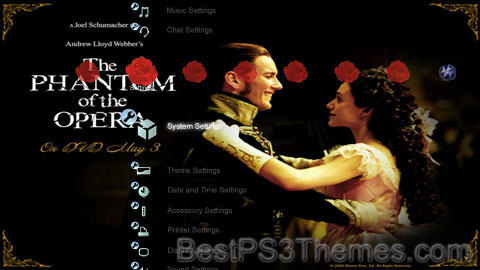
(5 backgrounds)
God Armor
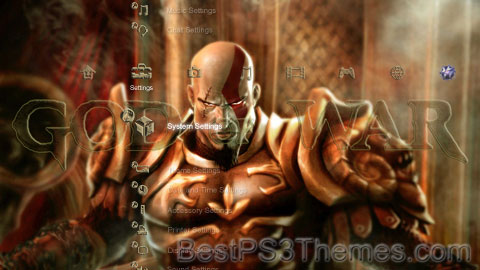
(1 background)
Copyright (c) 2007. Anoop Menon
p3textractor filename.p3t [destination path]Replace filename with the name of the p3t file, and replace [destination path] with the name of the folder you want the files to be extracted to. A destination path is not required. By default it will extract to extracted.filename.Super Red Glossy v1.50

(1 background)
Copyright (c) 2007. Anoop Menon
p3textractor filename.p3t [destination path]Replace filename with the name of the p3t file, and replace [destination path] with the name of the folder you want the files to be extracted to. A destination path is not required. By default it will extract to extracted.filename.Fire Multiple
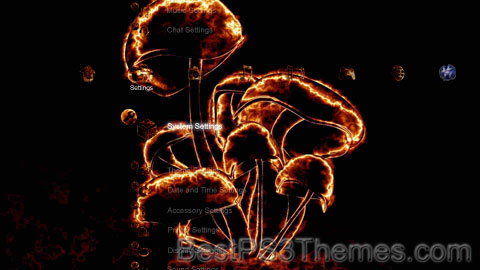
(4 backgrounds)
Copyright (c) 2007. Anoop Menon
p3textractor filename.p3t [destination path]Replace filename with the name of the p3t file, and replace [destination path] with the name of the folder you want the files to be extracted to. A destination path is not required. By default it will extract to extracted.filename.Cheryl (Tweedy) Cole

(1 background)
Copyright (c) 2007. Anoop Menon
p3textractor filename.p3t [destination path]Replace filename with the name of the p3t file, and replace [destination path] with the name of the folder you want the files to be extracted to. A destination path is not required. By default it will extract to extracted.filename.Armin van Buuren
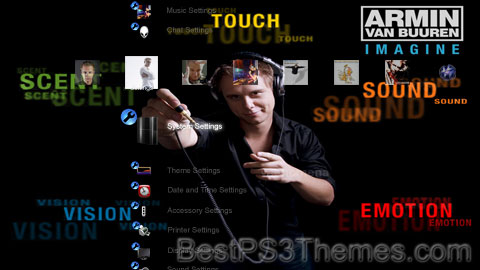
(3 backgrounds)
OON
Background information Birth name Armin Jozef Jacobus Daniël van Buuren Also known as Rising Star, Perpetuous Dreamer Born 25 December 1976
Leiden, South Holland, Netherlands[1]Origin Koudekerk aan den Rijn, Netherlands Genres Occupation(s) Instrument(s) Years active 1996–present Labels Spouse(s)
Website arminvanbuuren Signature 
Personal life[edit]
Music career[edit]
1996–1999: Early career and success[edit]
2000–2004: 76 and A State of Trance series[edit]
2005–2006: Shivers[edit]
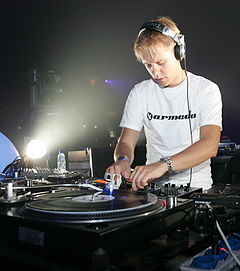
2007–2009: Imagine[edit]
2010–2012: Mirage and appointment to the Order of Orange-Nassau[edit]
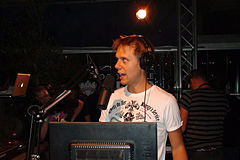
2013–2014: Intense[edit]
2015–2018: Embrace[edit]

2019–2023: Balance[edit]
2023–2024: Breathe In[edit]<
Jimi Hendrix #2
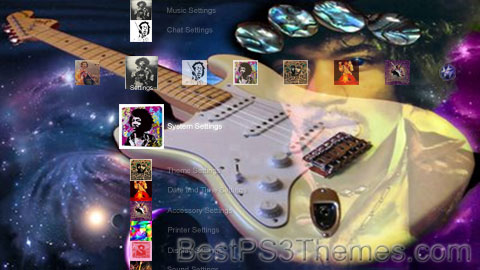
(4 backgrounds)

Background information Birth name Johnny Allen Hendrix Also known as James Marshall Hendrix Born November 27, 1942
Seattle, Washington, USDied September 18, 1970 (aged 27)
London, EnglandGenres Occupations Instruments Years active 1962–1970 Labels Formerly of Website jimihendrix Signature 
Ancestry and childhood[edit]

First instruments[edit]
Military service[edit]
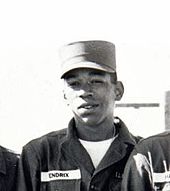
Career[edit]
Early years[edit]
First recordings[edit]
The Jimi Hendrix Experience[edit]

Victoria Frances
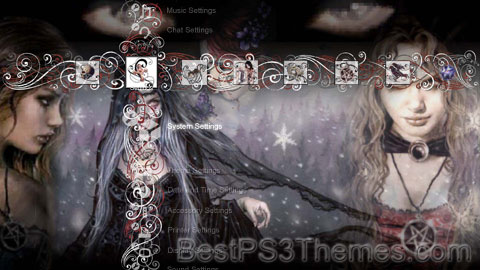
(2 backgrounds)
Grindhouse #2
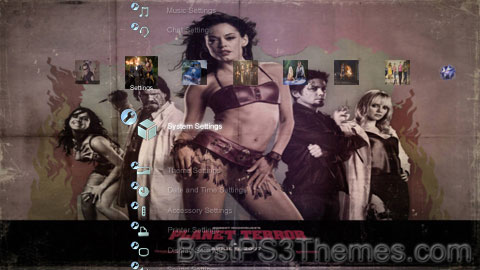
(8 backgrounds)

History[edit]
Television pressure[edit]
Content[edit]
Decline[edit]
Gallery[edit]
See also[edit]
References[edit]
I spent my first night in San Diego sleeping in the back row of the Cabrillo Theater.
In that pre-Gaslamp, pre-multiplex downtown of 1978 or so, half a dozen wonderfully eclectic – if mildly disreputable – late night movie houses operated within a few blocks of each other. Each grindhouses was a colorful oasis, plopped down in the middle of a seedy urban sprawl perfectly suited to the sailors on shore leave and porn aficionados that comprised much of its foot traffic.
A couple of bucks got you a double or triple bill, screened 'round the clock in cavernous single-screen movie theaters harkening back to Hollywood's golden age, rich in cinematic history and replete with big wide aisles and accommodating balconies. Horton Plaza had the Carbillo [sic] and the Plaza Theater, both operated by Walnut Properties, whose owner Vince Miranda maintained a suite at the Hotel San Diego (which he also owned).Because grindhouse theaters were nasty places, full of nasty people, and most of us wouldn't be caught dead in one. The few folks who were there for the actual movies were either poverty tourists or cinephiles who didn't notice anything except the flickering screen, and, in many cases, their cinephilia had burned out their sense of discrimination, because a lot of the movies that showed in grindhouses were bad.
Bibliography[edit]
External links[edit]
![]()






